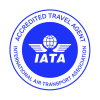The National Park
The National Park
With its 972,000 square kilometers, Greenland’s National Park is the world’s largest. Here there is plenty of space for the approx. 40 inhabitants and the rich wildlife can frolic.
The national park encompasses the entire north-eastern part of Greenland north of Ittoqqortoormiit and stretches from Knud Rasmussen’s land in the north to Mesters Vig in the east. Most of the national park in Greenland is covered by the ice sheet. Only along the 18,000 kilometer long coastline can you find free places during the summer months.
Today, the national park is an important piece of climate research. The research station Zackenberg, which you will find a good 450 kilometers north of Ittoqqortoormiit, is the focal point for monitoring the effect of climate change. This is because Zackenberg is located in a high arctic climate zone. This climate zone responds earlier to changes in global weather and other research stations. Greenland’s National Park is therefore a focal point in relation to climate change research.
In the National Park there are a number of different Inuit settlements and the oldest is estimated to be more than 4,500 years old. At that time, the Inuit went from Canada to the north-east of Greenland. Today it is only trappers from Ittoqqortoormiit who visit the National Park for hunting and dog sledding in addition to the permanent residents.
In 1941, the Sirius Patrol was born, a Danish military unit subordinate to the Arctic Command. It happened because Denmark and Norway could not agree on who had the right to Northeast Greenland. Denmark won the case by a judgment handed down at the International Court of Justice in The Hague. The decision meant that Denmark had to show that they could maintain patrolling.
The sled patrol Sirius has its main base at Daneborg in Northeast Greenland. The patrol monitors the area on dog sled trips and sailing. At the same time, the sledge patrol must control expeditions and conservation regulations in the Greenland National Park. The weather stations at Station Nord and in Danmarkshavn are also staffed. The main task for the staff in Danmarkshavn is to launch a weather balloon with measuring instruments twice a day. Mesters Vig is also staffed – especially in the summer there is lively activity in the old mining town
The national park in Greenland can only be visited in special cases and requires thorough planning and safety requirements. The visit will require special permission from Greenland’s Self-Government. This application must be made well in advance of departure. If you travel by cruise ship, this is handled and there is no need for further handling. Each year, a low number of independent travelers visit the national park – usually by boat.
The best time to visit is July and August. At this time, the fjords in the National Park are ice-free and most places are accessible. It is also the best time to encounter wildlife and the breeding birds are still present in the area before starting their southward migration. From mid to late August, the tundra begins to take on its “autumn coat” of magnificent orange and red colors.
Selected tour operators in the National Park
NANU Travel
If you wish to go dogsledding in Greenland, Ittoqqortoormiit/Scoresby Sund is an excellent choice!
Besides dog sledding Nanu Travel offers kayaking, survival training, Arctic trophy hunting, Arctic expeditions, trips to see Arctic wildlife, and hiking trips. They can assist you in your tour planning, help you with rental gear and make your wildest expedition dreams come true.



